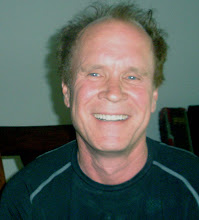Networks have complex topologies and can even exist in many dimensional space. Their boundaries are indistinct, and they change over time. Given this, how do we look at them?
Right now there buzz about "social graphs." In order to do this it is necessary to assume networks as distinct nodes, that ties are concrete and that the network is looked at from the individual's viewpoint. Technically this is called an "egocentric" viewpoint, not because the individual is egotistical, but "ego" means "self" in Latin and sociologists distinguish "ego" as "self" and "alter" as "other." (We could use "self" instead of "ego," but calling someone "self-centered" is not much of an improvement :).
To me, I wonder how important that is to know? We already have our own view of our networks, Perhaps we do not think of it that way, but we are limited in what we can see by where we are. Most of us won't ever really know what Warren Buffet and Bill Gates talk about with their friends at dinner parties; or what the leader of a village in Pakistan talks about with his friends. We are literally in different worlds.
It is important to know ones own network because people that have more diverse networks are healthier, happier, wealthier and many good things, that aspect of it is valuable. By seeing who our connections connect to we can broaden our search. Of course, all kinds of social media is allowing that. Heck, it is pretty cheap to put an ad on Google if we are want to be seen or to find something. So in my mind, the social graph as we are now thinking of it is more cool than useful. This is because it is an ego centric view of the networks
But there are places that can have a network centric view. LinkedIn has its view of the social networks, Microsoft has its view of IM traffic, phone companies have their networks. All of these provide "network centric" views of the network. That means they can see the whole network at the same time. We can see it from anyone's point of view, what could that mean?
We will see groups of people that are not connected, they could not have a view of each others. We can see groups forming and groups disbanding. We can see who in a group has higher status or is closer to what is going on. We can see the connectors and the hubs. Each community is like a geographic region with its own stories and when we see them, we can ask what is going on. From our own view point they are invisible, or blur together like the Milky Way.
Tuesday, May 27, 2008
Subscribe to:
Post Comments (Atom)

No comments:
Post a Comment